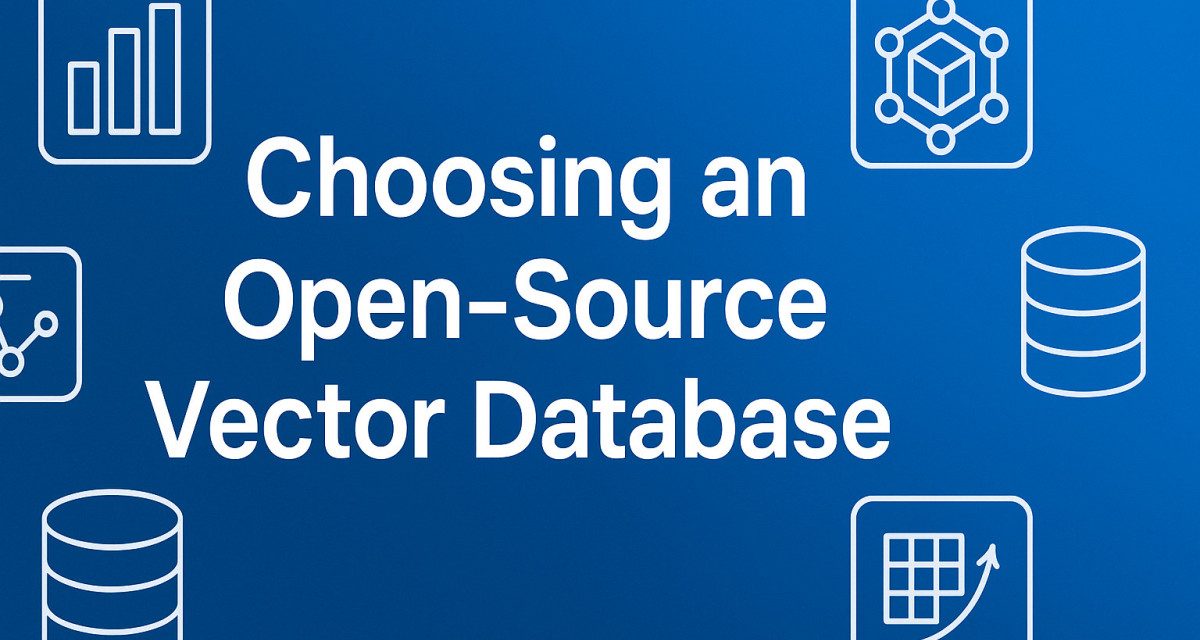Vector databases are becoming essential components of modern AI-driven applications, enabling efficient storage and retrieval of high-dimensional embeddings. Here, we explore some popular open-source vector databases to help you decide which one best fits your needs.
Comprehensive Comparison Table
| Feature | Qdrant | Weaviate | Milvus | Chroma | FAISS | pgvector | Elasticsearch |
|---|---|---|---|---|---|---|---|
| License | Apache 2.0 | Apache 2.0 | Apache 2.0 | Apache 2.0 | MIT | PostgreSQL | Apache 2.0 |
| Ease of Use | High | Medium | Medium | Very High | Medium (library) | High (if familiar with PostgreSQL) | Medium (complex setup) |
| Scalability | High | High | Very High | Medium | High | Medium | Very High |
| Search Performance | Very High | High | Very High | High | Very High | Medium | High |
| Community & Support | Strong & Active | Strong & Active | Strong & Active | Growing & Active | Large & Established | Strong PostgreSQL community | Very Strong & Established |
| Integration & Compatibility | REST, gRPC, Python | REST, GraphQL | REST, Python SDK | Python API | Python, C++ APIs | PostgreSQL-compatible | REST, Java, Python |
| Resource Efficiency | Good | Moderate | Moderate | Excellent | Excellent | Good (depends on PostgreSQL setup) | Moderate |
| Advanced Features | Filtering, Payload management, Cloud deployment | Semantic Search, Schema-first design, Modular | Distributed clustering, GPU acceleration, Partitioning | In-memory, Persistent storage optional | GPU optimized, Multiple indexes types | Direct PostgreSQL integration | Robust analytics, Search capabilities |
Pros and Cons:
Qdrant
- Pros: Easy deployment, high-performance searches, great community.
- Cons: Less mature compared to Elasticsearch or Milvus.
- Best Use Case: Recommended for fast iteration, robust deployment, and developer-friendly setups.
Weaviate
- Pros: Strong semantic search capabilities, schema-driven, good integration options.
- Cons: Slightly complex setup compared to Chroma or Qdrant.
- Best Use Case: Ideal for semantic-heavy applications and structured data requirements.
Milvus
- Pros: Excellent scalability, GPU acceleration, well-suited for enterprise-grade deployments.
- Cons: More complex architecture requiring higher maintenance.
- Best Use Case: Best suited for large-scale, enterprise-level projects requiring distributed deployments.
Chroma
- Pros: Extremely lightweight, easy to get started, perfect for local development.
- Cons: Limited scalability, primarily for smaller datasets or rapid prototyping.
- Best Use Case: Suitable for prototyping, local development, and small-scale applications.
FAISS
- Pros: Highly optimized for performance, GPU support, industry standard for similarity searches.
- Cons: Lower-level implementation, requires additional infrastructure for production.
- Best Use Case: Ideal for performance-critical applications needing custom optimization and large-scale vector searches.
pgvector
- Pros: Seamless PostgreSQL integration, simple to set up if familiar with SQL databases.
- Cons: Limited advanced search features compared to dedicated vector databases.
- Best Use Case: Recommended for users with PostgreSQL databases looking for simple vector integration.
Elasticsearch
- Pros: Highly mature, excellent community support, powerful text search capabilities combined with vector search.
- Cons: Relatively heavy setup and resource requirements.
- Best Use Case: Great for combined text and vector search capabilities, especially in large-scale analytics-driven applications.
Conclusion
Selecting the right vector database depends on your specific needs concerning scalability, ease of use, integration, and performance. Evaluate each based on your project requirements, resource availability, and desired features.


Recent Comments